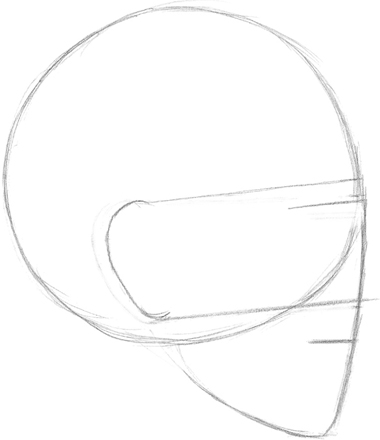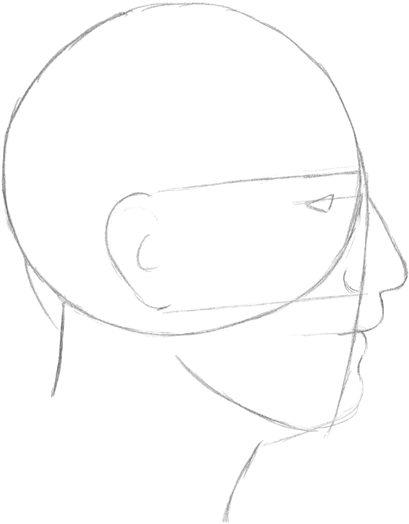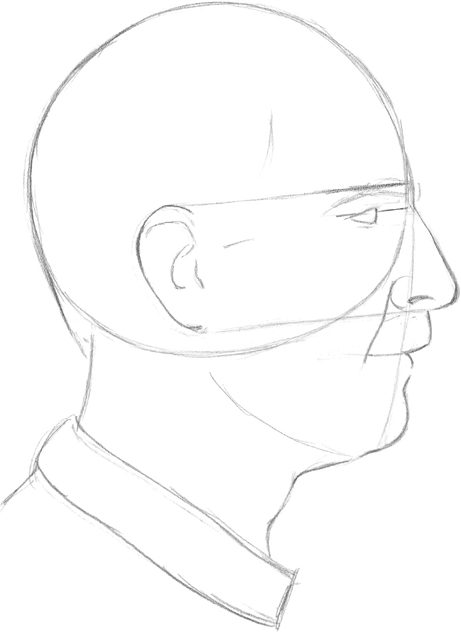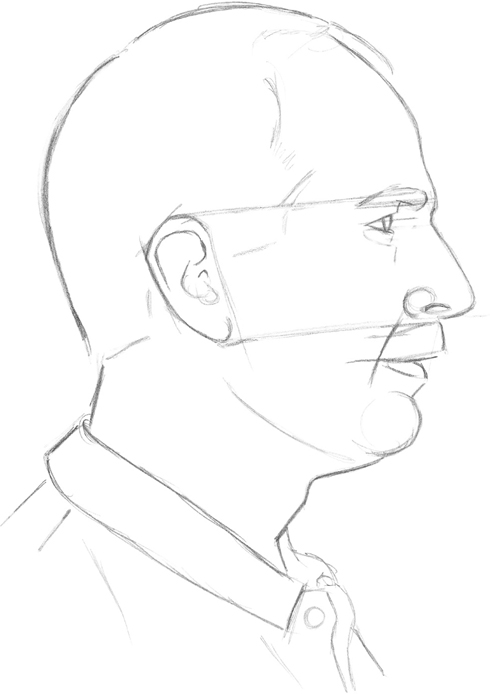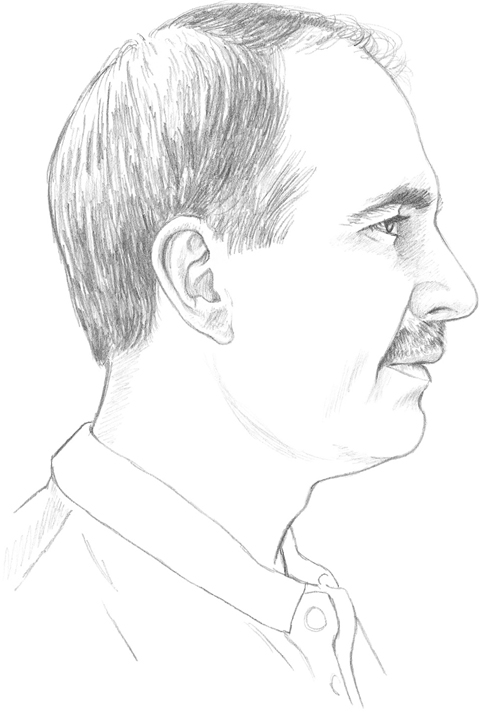Approaching a Profile View
A profile view can be very dramatic. Seeing only one side of the face can bring out a subject’s distinctive features, such as a protruding brow, an upturned nose, or a strong chin. Because parts of the face appear more prominent in profile, be careful not to allow any one feature to dominate the entire drawing. Take your time working out the proportions before drawing the complete portrait.
DRAWING IN PROFILE When drawing a subject in profile, be careful with proportions, as your facial guidelines will differ slightly. In a profile view, you see more of the back of the head than you do of the face, so be sure to draw the shape of the skull accordingly.
STEP 1 After lightly drawing a circle for the cranial mass, I use an HB pencil to block in the general shapes of the face, chin, and jaw line. Then I add guidelines for the eyes, nose, mouth, and ear. (See page 7 for general rules regarding the placement of features in a profile view.)
I closely observe my subject to see how the positions and angles of his features differ from the “average.”
STEP 2 Following the guidelines, I rough in the shapes of the features, including my subject’s slightly protruding upper lip. I sketch a small part of the eye, indicating how little of the iris you actually see in a profile view. (See page 8 for more information on drawing eyes in profile.)
STEP 3 When I sketch the eyebrow, I pay particular attention to the space between the eye and the eyebrow; in this case, the subject’s eyebrow is fairly close to his eye. It also grows past the inside corner of his eye, very close to his nose, and tapers toward the outside corner of the eye. Next I continue refining the profile, carefully defining the shapes of the chin and the neck (including the Adam’s apple).
STEP 4 In a profile view, the hairline is important to achieving a likeness, as it affects the size and shape of the forehead. This subject has a very high forehead, so the hairline starts near the vertical centerline of the cranial mass. Once I’m happy with the shapes of the face and hairline, I start refining the features, giving them form.
STEP 5 Here you can see that the drawing is really starting to resemble the subject. Next I switch to a 2B pencil and continue building up the forms: I round out the nose and chin; add light, soft strokes to the area above the lip for the mustache; and suggest the hair using short, quick strokes. Then I add more detail to the eye and develop the ear and the eyebrow.
STEP 6 Still using the 2B, I continue to develop the hair, eyebrows, and mustache, always stroking in the direction that the hair grows. I leave plenty of white areas in the hair to create the illusion of individual strands. Next I begin to suggest the curves and shadows of the face by shading the eye, ear, and nose. (See “The Effects of Light” on page 5 for tips on shading a profile.)
STEP 7 I continue shading the lips, pulling out a white highlight on the bottom lip with a kneaded eraser. Then I shade more of the ear and add even darker values to the hair, leaving highlights on the crown of the head, as it is in the direct path of the light source. I also shade the forehead, the nose, and the chin. I leave the majority of the cheek and the middle part of the forehead white. This helps indicate that the light source is coming from above, angled toward the visible side of the face.

